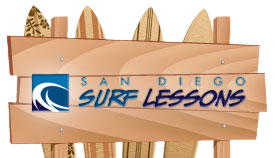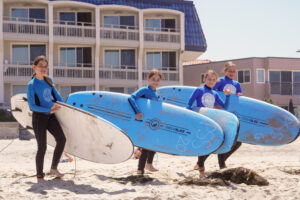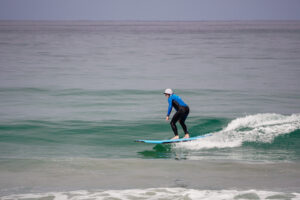To be able to surf you only need a surfboard and some waves, right? Yeah, this is somewhat right, but the reality is that you will need come accessories to be safe in the water, as well as the other people around you. Leashes and fins are necessary, while nose guards are optional, but you should also use them.
The fins have a huge impact on the feel, stability, drive and maneuverability of a surfboard – factors that can completely alter the way you experience surfing. The surface area of the fins affects the way that the board feels and how easy it is to control. Greater fin area provides more control and stability, but also drags the board down. Less fin area gives the board more speed, but makes it more difficult to control. Nowadays, there are four popular fins configuration. Single finned, twin finned, thrusters (three fins) and four finned boards.
Types of Fins
Single fins
Typical on longboards, as well as on beginning surfboards. The idea behind the single fin is to provide stability and control. Unfortunately, the increased control also means a sacrifice in performance, as the movements that a single fin allows are restricted to sweeping turns and straight-lined charges.
Twin-fin boards
Are harder to control in large waves but offer good maneuverability in smaller conditions. They are usually found on shortboards and fish boards, because the two-fin setup encourages speed.
The thruster setup
Is the most common, and is found on all kinds of boards. It performs well under most ocean conditions, lending a stable feel to a maneuverable board. The outside fins are flat on the inside to increase drive, while the center fin is foiled normally. Additionally, the outer fins are toed-in to speed up the board and allow it to turn more easily. A thruster set-up is the go-to choice for most shapers.
The quad (four finned configuration)
is the most recent to be used by surfers. Most of the guys that opt for it are looking for the speed that it promotes. It is very good for barrels and down the line waves. It’s a mix of the twin-fin and the thruster characteristics.
Think of the fins as an extension of the board itself. That having been said, the first fin-related thing you’ll want to look at when checking out a potential board is the system itself. Are the fins permanently glassed-in, or are there fin boxes that allow you to swap out the fins. Here are some pros and cons of these two types of fin systems:
Glassed-in
This type of system is most common in retro, twin-fin boards, but some new boards do still come with glassed-in fins. Aesthetically, having the fins laminated right into the board are structurally more sound than removable fins, because the entire base of the fin becomes a part of the board. The laminated fin base also affects the way that the board cuts through the water, so more experienced surfers will notice better performance as well. However, they have become virtually extinct in the shadow of removable fin systems. They are a pain to replace if they break, they cannot be adjusted in any way, and they make traveling with your surfboard incredibly frustrating.
Removable
Instead of permanently attaching the fin itself to the board, a fin box is glassed-in instead. Each fin box has a groove that only matches one particular brand of fin, but surfers can change the style, shape and size at their discretion. With very little effort and a fin key (a small screwdriver-like device for securing a fin in its box), it’s possible to completely alter the type and number of fins on a board to suit varying surf conditions. Altering fin setups is quick and easy, usually taking less than a minute to complete.
While it’s great that adjustments, travel, storage and repair have become easier with the introduction of removable fins, there are still drawbacks to the new equipment. For newbie surfers especially, having to face the endless options associated with a removable fin setup can be daunting and confusing. Luckily, almost every surfboard comes with a set of fins already chosen for you. Removable fin systems are easy, customizable, portable and inexpensive.
Surfing leashes (or leg ropes) are the most important accessory when thinking about security in the water. It is a tethering device used to keep a surfboard from being washed away after the surfer and board are separated, usually after a wipeout. Today the surf leashes are made from a length of pliant and mildly elastic urethane cord. One end is attached to a thin rectangular nylon rail saver (to keep the cord from gouging into the board’s rail), which in turn is connected by a looped and knotted piece of nylon rope to a leash plug sunk into the deck of the surfboard near the tail. The other end is attached to a velcro strap that loops around the surfer’s rear ankle. A small metal swivel is added to each end of the urethane cord to prevent it from twisting and kinking.
Surf leashes come in about eight basic sizes and styles, from light, quarter-inch-thick, six-foot-long “string” or “comp” leashes used on most high-performance shortboards, to sturdy 10-foot cords used by longboards, as well as 1/3-inch-thick, 18-foot “monster cords” used by paddle-in big-wave surfers. Because the leash trails in the water behind the board’s wake and cause a small amount of drag, most surfers try to use the smallest and lightest leash possible. Bigger waves require a longer, thicker leash, because the surfer needs to put more distance between himself and the breaking wave while still strapped to what in effect is a flotation device. Added thickness increases the leash’s strength.
A small number of surfers have drowned after their leashes became tangled on an underwater rock or reef and leash-recoil is estimated to be the cause of over 10% of surf-related injuries. Untold thousands of injuries, however, have been avoided as boards no longer fly spear-like toward shore after each wipeout. Many big-wave riders, furthermore, claim to have saved their own lives after a long wipeout when they were able to use their leash to “climb” to the surface.
Another accessory that you might think of using is the nose guard for your surfboard. It you surf on a longboard forget about it, but if your board has a pointed nose, the fiberglass bayonets can stab, hack, gash, slash, lacerate, cut, pierce, stick, and impale eyeballs, necks, faces, and sexual organs. No matter where that nose decides to land after being tossed around in the foam ball, it’s not going to be pretty. Luckily, some companies make very good nose guards to mitigate chances of severe injury inflicted by the nose of your surfboard, so nose guards are a smart choice for surfers who are looking to protect themselves, other surfers and, or course, their boards.




